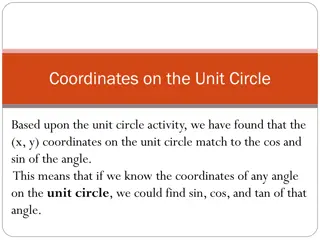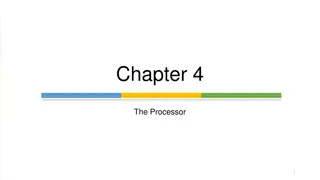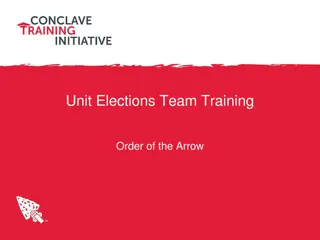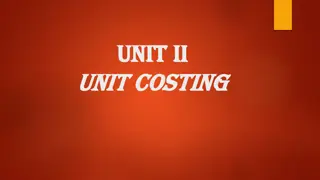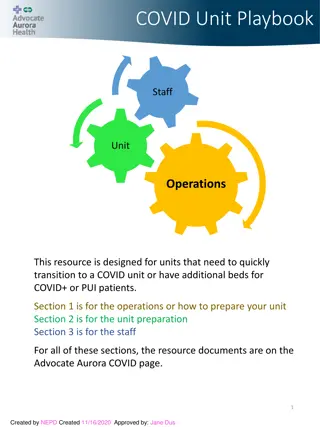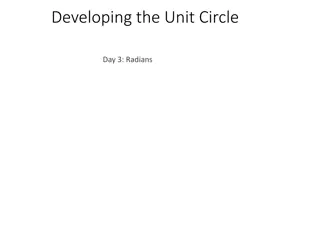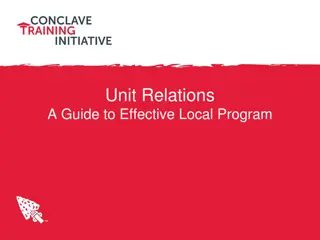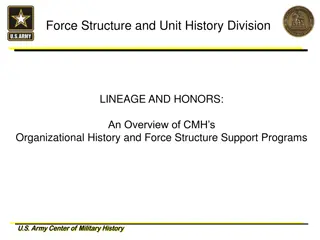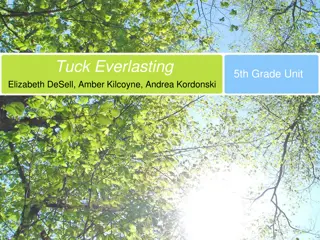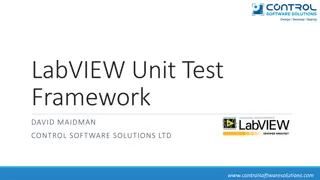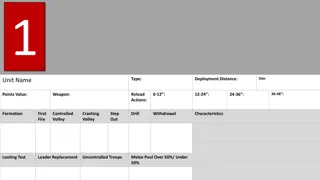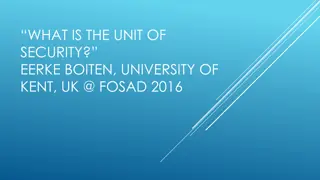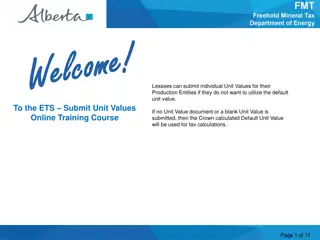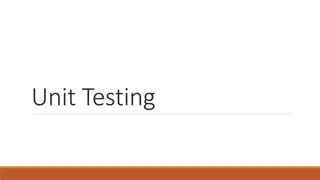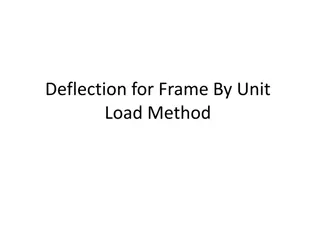
Polymerization Techniques Overview
Explore different polymerization techniques including bulk polymerization and solution polymerization. Understand the advantages and disadvantages of each method, along with their applications in producing various polymers.
Download Presentation

Please find below an Image/Link to download the presentation.
The content on the website is provided AS IS for your information and personal use only. It may not be sold, licensed, or shared on other websites without obtaining consent from the author. If you encounter any issues during the download, it is possible that the publisher has removed the file from their server.
You are allowed to download the files provided on this website for personal or commercial use, subject to the condition that they are used lawfully. All files are the property of their respective owners.
The content on the website is provided AS IS for your information and personal use only. It may not be sold, licensed, or shared on other websites without obtaining consent from the author.
E N D
Presentation Transcript
UNIT 5 POLYMERIZATION TECHNIQUES
POLYMERIZATION TECHNIQUES 1. Addition polymerization Bulk polymerization Solution polymerization Suspension polymerization Emulsion polymerization 2. Condensation polymerization Interfacial Polymerization Melt polycondensation Solution polycondensation
1. BULK POLYMERIZATION Mass or block polymerization: Polymerization of the undiluted monomer. carried out by adding pure monomer (in liquid state). a soluble initiator to The mixture is constantly agitated & heated to polymerization temperature. Once the reaction starts, heating is stopped as the reaction is exothermic. The heat generated is dissipated by circulating water jacket. Viscosity increases dramatically during conversion.
BULK POLYMERIZATION The method is used for the polymerization of liquid state monomers. It is usually adopted polyvinyl chloride, polymethyl methacrylate and low density polyethylene. to produce polystyrene,
Disadvantages Advantages The system is simple and requires thermal insulation. The polymer is obtained pure. Heat transfer and mixing become difficult as the viscosity of reaction mass increases. Highly exothermic. Large castings may be prepared directly. The polymerization is obtained with a broad molecular weight distribution due to the high viscosity and lack of good heat transfer. Molecular weight distribution can be easily changed with the use of a chain transfer agent. Very low molecular weights are obtained.
2. SOLUTION POLYMERIZATION Some disadvantages eliminated in solution polymerization. of bulk polymerization are Monomer along with initiator dissolved in solvent, formed polymer stays dissolved. The mixture is kept at polymerizaion temperature & constantly agitated. Depending on concentration of monomer the viscosity of solution does not increase.
SOLUTION POLYMERIZATION After the reaction is over, the polymer is used as such in the form of polymer solution or the polymer is isolated by evaporating the solvent. Polymer so formed can be used for surface coating. It is used for the production of Polyacrylonitrile, PVC, Polyacrylic acid, Polyacrylamide, Polyvinyl alcohol, PMMA, Polybutadiene, etc
Advantages The solvent acts as a diluent & helps in facilitating continuous transfer of Therefore temperature control is easy. The solvent allows easy stirring as it decreases the viscosity of reaction mixture. Solvent also facilitates the ease of removal of polymer from the reactor. Viscosity build up is negligible. heat of polymerization.
Disadvantages To get pure polymer, evaporation of solvent is required additional technology, so it is essential to separate & recover the solvent. The method is costly since it uses costly solvents. Polymers of high molecular weight polymers cannot be formed as the solvent molecules may act as chain terminators. The technique gives a smaller yield of polymer per reactor volume, as the solvent waste the reactor space. The purity of product is also not as high as that of bulk polymerization. Removal of last traces of solvent is difficult.
3. SUSPENSION POLYMERIZATION Liquid or dissolved monomer suspended in liquid phase like water. Initiators used are monomer soluble e.g. dibenzoyl peroxide. Thus, polymer is produced in heterogeneous medium. Initiator The size of monomer droplets is 50-200 m in diameter. The dispersion is maintained by continuous agitation and the droplets are prevented to coalesce (unite or merge) by adding small quantity of stabilizers.
SUSPENSION POLYMERIZATION The stabilizers used are PVA, gelatin, cellulose are used along with inorganic stabilizers such as kaolin, magnesium silicate, calcium/magnesium phosphate, etc if necessary. As it concerns with droplets, each droplet is tiny bulk reactor. The polymerization takes place inside the droplet & product formed being insoluble in water. The product separated out in the form of spherical pearls or beads of polymer. Hence the technique is also known as Pearl polymerization / Granular polymerization / Bead polymerization. aluminum hydroxide,
SUSPENSION POLYMERIZATION The products are small uniform spheres. They can be used directly for some applications as precursors of ion exchange resins otherwise they can be extruded & chopped to form larger, easily moulded pallets. They can be dissolved in a suitable medium for use as adhesives & coatings. This technique is used to form PVC, acetate, Polystyrene, copolymer beads (used for ion exchange) etc. Polyvinyl benzene Styrene-divinyl
Advantages The process is comparatively cheap as it involves only water instead of solvents. Viscosity increase is negligible. Agitation & temperature control is easy. Product isolation is easy since the product is insoluble in water.
Disadvantages The method can be adopted only for water insoluble monomers. It is difficult to control polymer size. Polymer purity is low due to the presence of suspending & stabilizing additives that are difficult to remove completely. Suspension polymerization reaction is highly agitation sensitive. Larger volume of reactor is taken up by water. The method cannot be used for tacky polymers such as elastomers because of the tendency for agglomeration of polymer particles.
4. EMULSION POLYMERIZATION The technique is used for the production of large number of commercial plastics & elastomers. The system consists of water insoluble monomer, dispersion medium & surfactants (soaps and detergents) and a water soluble initiator (potassium persulphate / H2O2, etc). The monomer is dispersed in the aqueous phase, not as a discrete droplets, but as a uniform emulsion. The size of monomer droplet is around 0.5 to 10 m in diameter depending upon the polymerization temperature & rate of agitation. emulsifying agents or
EMULSION POLYMERIZATION The emulsion of monomer in water is stabilized by a surfactant. A surfactant has a hydrophilic and hydrophobic end in its structure. When it is put into a water, the surfactant molecules gather together into aggregates called micelles. The hydrocarbon tails (hydrophobic) orient inwards & heads (hydrophilic) orient outwards into water. The monomer molecules diffuse from monomer droplets to water & from water to the hydrocarbon centre of micelles.
EMULSION POLYMERIZATION Water Monomer Surfactant Main components of emulsion polymerization Examples: Synthetic rubber-styrene-butadiene (SBR), Polybutadiene, Polychloroprene. Plastics-PVC, polystyrene, Acrylonitrile-butadiene-styrene terpolymer (ABS). Dispersions-polyvinyl acetate, polyvinyl acetate copolymers, latex acrylic paint, Styrene-butadiene, VAE
Advantages Disadvantages Surfactants and polymerization adjuvants -difficult to remove High molecular weight polymers fast polymerization rates. allows removal of heatfrom the system. viscosity remains close to that of water and is not dependent on molecular weight. The final product can be used as such ,does not need to be altered or processed For dry (isolated) polymers, water removal is an energy- intensive process Designed to operate at high conversion of monomer to polymer. This can result in significant chain transfer to polymer. Can not be used for condensation, ionic or Ziegler- Natta polymerization.
Interfacial Polymerization of Nylon 6,10

